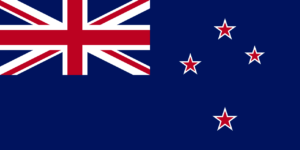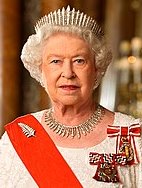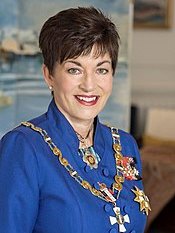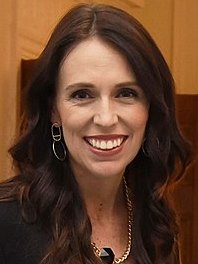Archive for July 21st, 2022
» posted on Thursday, July 21st, 2022 by Linda Lou Burton
From the Queen Bee to the MMP
 Originally Published July 23, 2020 by Linda Lou Burton posting about Wellington, New Zealand from Little Rock, Arkansas – This is a major election year in the United States, with politics running hot and uncertainty running high under the shadow of COVID-19. As I’ve studied the island nation of New Zealand these last few days, I found that 2020 is an election year there too – they do it every three years. So I dug in to see how it’s going.
Originally Published July 23, 2020 by Linda Lou Burton posting about Wellington, New Zealand from Little Rock, Arkansas – This is a major election year in the United States, with politics running hot and uncertainty running high under the shadow of COVID-19. As I’ve studied the island nation of New Zealand these last few days, I found that 2020 is an election year there too – they do it every three years. So I dug in to see how it’s going.
 I learned that New Zealand ranks high in civic participation, with almost 80% voter turnout in recent elections. Considered one of the world’s most stable and well-governed states, the country is a constitutional monarchy with a parliamentary democracy, and Elizabeth II is the queen of New Zealand and therefore head of state.
I learned that New Zealand ranks high in civic participation, with almost 80% voter turnout in recent elections. Considered one of the world’s most stable and well-governed states, the country is a constitutional monarchy with a parliamentary democracy, and Elizabeth II is the queen of New Zealand and therefore head of state.
Now hang on and follow this trail, remember that the Beehive in Wellington is comparable to the US Capitol in Washington, DC. Here goes:
Head of State
As Head of State of New Zealand, the Queen has a range of royal powers which include signing bills into law, formally appointing governments and Ministers, appointing judges, and opening and dissolving Parliament.
 Her representative, the Governor-General, currently Dame Patsy Reddy (2016), has full authority to act on the Queen’s behalf when the Queen is not physically present in New Zealand. Make note: The Queen has visited New Zealand on only ten occasions since 1953, the last in 2002.The Constitution Act states that the Queen, or the Governor-General, can only exercise any of the royal powers with the advice and consent of the Government of the New Zealand.
Her representative, the Governor-General, currently Dame Patsy Reddy (2016), has full authority to act on the Queen’s behalf when the Queen is not physically present in New Zealand. Make note: The Queen has visited New Zealand on only ten occasions since 1953, the last in 2002.The Constitution Act states that the Queen, or the Governor-General, can only exercise any of the royal powers with the advice and consent of the Government of the New Zealand.
Head of Government
The New Zealand Government is the central government through which governing authority operates, within the framework “the Queen reigns, but the government rules, so long as it has the support of the House of Representatives.”
Parliament consists of the Sovereign, (the Head of State) and the House of Representatives, (the elected legislature.) Parliament has 120 seats.
 The Prime Minister is New Zealand’s head of government, with the authority to lead the government while answering to Parliament. The Prime Minister is formally appointed by the Governor General, based on agreements between parties and internal leadership votes. Jacinda Ardern (2017) serves as the current Prime Minister, an elected member of the Labour Party – the largest party in the coalition Government formed after the 2017 elections.
The Prime Minister is New Zealand’s head of government, with the authority to lead the government while answering to Parliament. The Prime Minister is formally appointed by the Governor General, based on agreements between parties and internal leadership votes. Jacinda Ardern (2017) serves as the current Prime Minister, an elected member of the Labour Party – the largest party in the coalition Government formed after the 2017 elections.
Political Parties in New Zealand
There are five parliamentary parties in the 52nd Parliament.
- The ACT Party has one member of Parliament. Read more
- The Green Party of Aotearoa / New Zealand has 8 members of Parliament, all from the party list. Read more
- The New Zealand Labour Party has 46 members of Parliament, 17 elected from the party list and 29 electorate seats. Read more
- The New Zealand National Party has 54 members of Parliament, 15 elected from the party list and 39 electorate seats. The National Party is in Opposition. Read more
- The New Zealand First Party has 9 members of Parliament, all from the party list. Read more
The MMP
MMP is the voting system in New Zealand. It stands for Mixed Member Proportional. A registered voter gets two votes under MMP:
- A party vote for a political party to help choose how many seats in Parliament each party gets.
- An electorate vote for a candidate from the area the voter lives in.
 Every candidate who wins an electorate gets a seat in Parliament. They are called Electorate MPs. The remaining seats are filled from party lists. Every party has a list of candidates ranked in the order the party wants those candidates to be elected to Parliament. Candidates elected from a party list are called List MPs.
Every candidate who wins an electorate gets a seat in Parliament. They are called Electorate MPs. The remaining seats are filled from party lists. Every party has a list of candidates ranked in the order the party wants those candidates to be elected to Parliament. Candidates elected from a party list are called List MPs.
Usually no party gets enough votes to govern alone. Parties often need to come to an agreement with other parties to form a government or pass legislation. Some types of possible agreements are:
- coalitions — when two or more parties join together to form a government
- confidence and supply agreements — when one party agrees to support another on certain issues and laws that are voted on in Parliament.
Who Can Vote
You are eligible to enroll and vote if you are 18 years or older, a New Zealand citizen or permanent resident, and you’ve lived in New Zealand continuously for 12 months or more at some time in your life. If you’re of Māori descent and enrolling for the first time, you may enroll on the general roll or the Māori roll to choose which electorate you vote in.
If you’re in New Zealand, you’ll be able to vote from Saturday 5 September to 7pm on election day, Saturday 19 September. Voting places will open across New Zealand, so everyone has a chance to vote. You can vote from overseas from Wednesday 2 September.
At the 2020 General Election, you can vote for the parties and candidates you want to represent you in Parliament, and you can vote in two referendums: whether the recreational use of cannabis should become legal, and whether the End of Life Choice Act 2019 should come into force, giving people with a terminal illness the option of requesting assisted dying.
Making It Safe To Vote
Keeping everyone safe is essential. Voting will open 2 days earlier than usual, and there will be more voting places to reduce queues. Vote locally and bring your own pen if you can. Hand sanitizer will be provided at voting places, and there will be space for physical distancing. If you need to stay home, you’ll have other ways of voting including voting by post.
Preliminary election results will be released from 7pm on 19 September; official results for the general election and referendums will be released on Friday 9 October.
This information was taken from the following websites, an impressive and useful array of tools to keep New Zealanders informed:
- The Beehive, Official website of the New Zealand Government, https://www.beehive.govt.nz/
- New Zealand Parliament, business, calendar, electorates, visit and learn, https://www.parliament.nz/
- Political Parties in New Zealand, https://www.parliament.nz/en/mps-and-electorates/political-parties/
- New Zealand Government, the system, how it works, how to engage, https://www.govt.nz/
- New Zealand Electoral Commission, complete voting information with a special page devoted to COVID-19 concerns: https://vote.nz/
